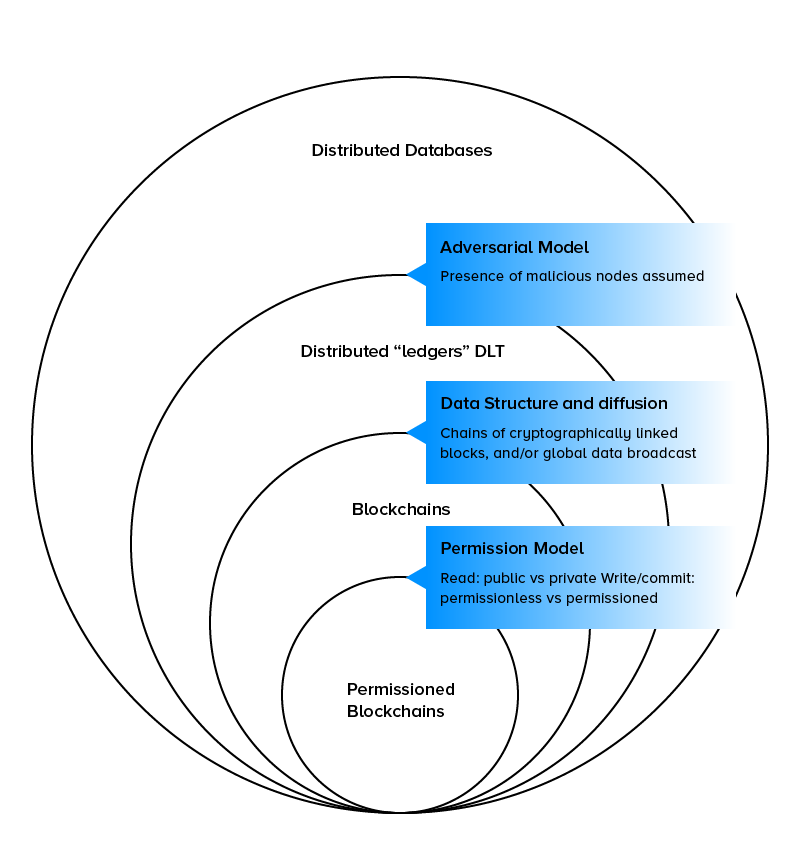"Blockchain" and "Distributed Ledger Technology" (or "DLT") are too very big buzzwords today that are often misunderstood, or misused. Here is where Circle fits.
Blockchain is a decentralized, distributed and often public database type where data is saved in blocks, such that the hashcode present in any block is created using the data of the previous block. These blocks offer a complete set of characteristics like transparency, immutability, and scalability
Blockchain vs DLT – An Explanatory Guide
Blockchain has many compelling applications and use cases, but most of these revolve around some form of enables parties that do not trust each other to verify any transaction without involving any intermediaries.
This is a definition according to the framework of the 'Crypto' world.
DLT is a digital system used for storing the transaction of assets, even when the data is stored at multiple places simultaneously. It might sound like a traditional database, but is different because of the fact that there is no centralized storage place or administration functionality. Meaning, every node of the ledger processes and validates every item, and this way, contributes to generating a record of each item and building a consensus on each item’s veracity.
Blockchain vs DLT – An Explanatory Guide
Some of the advantages of DLT are considered to be the following.
The most important thing to understand is that Blockchain is a form of DLT - one type, a sub-set. DLT is the broader concept.

Circle's internal, immutable DLT meets - and exceeds - all of these advantages, and was architected for similar objectives.
The way it works in Circle is that each device generates a ledger - and append only file - of its actions. That's all it can do. Every device gets a copy of all the other devices files, and the complete ledger of all the actions between that group of devices is assembled in "run time". When the user is viewing/working. If there is an "edit" or "deletion" of something, an entry is made in the ledger on the device that does it. Then when displaying the edit or deletion is applied, but the original entry is unchanged. No device can change the entries of another, and if any change was made nefariously it can be detected.
In the wider world of DLT, the presence of 'adversarial nodes' is a potential issue because the ledger is spread out across thousand or millions of users and all kind of servers owned by different parties participating in a shared ledger. With Circle that is not an issue because the DLT is internal to an AES 256 encrypted "Circle" between a small number of users.
Most people don't differentiate, and of course Blockchain is the sexy term to use. But there are several differences that are critical to the kinds of use cases that Circle is focused on solving.
When your want to have a digital currency, for example, this overhead that comes with Blockchain is worthwhile. But when you just want to have immutable, auditable data trails that can be trusted, it's preposterous.
Circle has an internal immutable DLT, not Blockchain. We have all the benefits of Blockchain - Immutable, Encrypted, Private but Trusted, Verifiable, Auditable - with none of the overhead.
When we have use cases that require blockchain, then Circle will integrate with it. Especially Calendar Hashchain, which has a proof of participation architecture that is orders of magnitude faster & planetary Internet scalable. The "Block" of blockchain - the protected data of the whole transaction or whatever it is - in our case is inside of Circles. But with speed and scalability.
But that's the topic for another day!